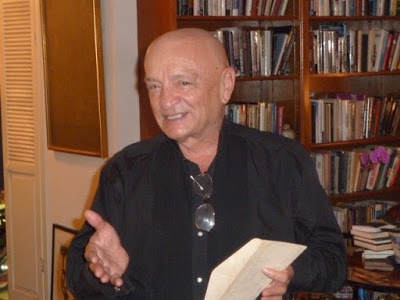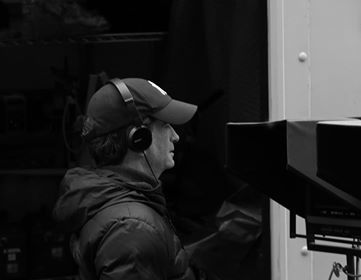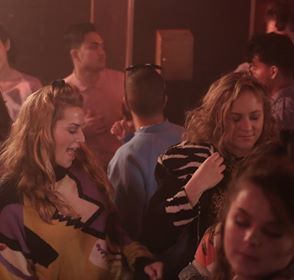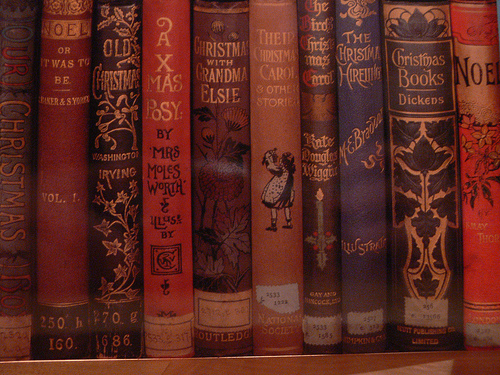Kenneth Atchity's Blog, page 127
December 25, 2017
MERRY CHRISTMAS
Published on December 25, 2017 00:00
December 23, 2017
NEVER GIVE UP! by Ken Atchity
 What are the ingredients of a New York Times Best Seller? Ken Atchity has the answers and they are not what you expect. He is a movie producer, author of over 20 nonfiction books and novels. He has spent his lifetime helping writers get started and improve their careers. Writing was in his blood from the beginning. ‘I never understood writers’ block because I never had it,” he says.
What are the ingredients of a New York Times Best Seller? Ken Atchity has the answers and they are not what you expect. He is a movie producer, author of over 20 nonfiction books and novels. He has spent his lifetime helping writers get started and improve their careers. Writing was in his blood from the beginning. ‘I never understood writers’ block because I never had it,” he says.What is the right mindset for being successful as a self-published writer?
It’s about what Winston Churchill said: “Never give, never give, never give up!” Don’t doubt yourself, keep working and learning more about your craft.
You wrote over 20 non-fiction books and novels. Are you still learning?
Yes, I am. I am always learning. I love writing because it’s a way of focusing your learning. I write the book first, then I do the research and spend years revising the book.
Some writers confessed that they don’t read books when they work on something new…
While you write your first draft, there is no need for you to read something else.The time to start reading other things is after you’ve finished it and improved it. You can always study yourself to death and never finish the first draft. And that’s the danger of it, or being influenced by other voices. It is much better to get your voice clear in the first draft and then give yourself a limited amount of time to do further research to make sure things are accurate. You would be surprised how often your imagination gets things pretty much right.
What do you appreciate most in a book?
I love books that take you to another world and keep you there the whole time. A storyteller who knows his craft will do this by not making a single mistake. A mistake is something that takes you suddenly out of that world.
You helped several authors to make the New York Times Best Sellers list. What are the ingredients of a bestseller?
That list is a victim of the changing times we are living now. In today’s world, a person needs to be famous or write about someone who is. The most recent three NY Times Best Sellers were about John Kennedy. But this list is not the only judge. Selling books on the Internet is a direct and immediate way to see if you could find an audience for your book.
Read more

Published on December 23, 2017 10:21
December 22, 2017
The Girly Book Club Reviews Jerry Amernic's The Last Witness
 Amazon / Amazon UK / Amazon CA / Barnes and Noble
Amazon / Amazon UK / Amazon CA / Barnes and Noble4/5 *
A dystopian story. 1984 meets The Holocaust. The Last Witness, written by Jerry Amernic, has one of the most fascinating premises for a book I’ve ever come across. Two years ago Amernic asked university students what they knew about The Holocaust and WWII. Their lack of knowledge and incorrect information in their answers inspired Amernic to write this futuristic thriller.
Within the first 4 pages of this book I thought three things:
1. It’s the future
2. It’s set in NYC
3. Although I was already sucked into the plot, the characters, and the language, there was a small part of me that knew it was probably going to break my heart over and over throughout the journey.
And I was right.
Jack Fisher is the last living Holocaust survivor. It’s 2039. Jack has a great-granddaughter Christine who is an 8th-grade history teacher. Christine is fighting the school board to have The Holocaust inserted back into the curriculum. When Christine suddenly goes missing, Jack soon finds himself in danger once again. We’re left to discover that what was once science is now personal belief, and what was once history has morphed into religion.
If Orwell is your guy, and Atwood (The Handmaid’s Tale) is your lady, then this is right up your alley.
For all our sakes, I hope this remains just a great novel and not a sign of things to come
Review by Sara Kafka

Published on December 22, 2017 00:00
December 20, 2017
Behind the scenes ... The Book of Leah Production Photos
Published on December 20, 2017 11:55
December 19, 2017
Dennis Palumbo's Head Wounds Makes Thomas Perry’s Favorites of 2017!
It’s his 5th book about psychotherapist Daniel Rinaldi. I recommend it highly, particularly for people who have read the rest of the series, because it is one of those books that take up some issues we’ve been wondering about since the beginning of a series, and give us big, shocking answers to them. I also think the villain in this book is more frightening than any other I’ve seen for quite a while. Very early in the book he gets into the reader’s head like a recurring nightmare, and for the rest of the book we root for Rinaldi to get him out for us by catching him or killing him. ~ Thomas Perry
Read more

 Dennis Palumbo
Dennis Palumbo
Psychologist Dr. Daniel Rinaldi consults with the Pittsburgh Police. His specialty is treating victims of violent crime—those who’ve survived an armed robbery, kidnapping, or sexual assault, but whose traumatic experience still haunts them. Head Wounds picks up where Rinaldi’s investigation in Phantom Limb left off, turning the tables on him as he, himself, becomes the target of a vicious killer.
“Miles Davis saved my life.” With these words Rinaldi becomes a participant in a domestic drama that blows up right outside his front door, saved from a bullet to the brain by pure chance. In the chaos that follows, Rinaldi learns his bad-girl, wealthy neighbor has told her hair-triggered boyfriend Rinaldi is her lover. As things heat up, Rinaldi becomes a murder suspect.
But this is just the first act in this chilling, edge-of-your-seat thriller. As one savagery follows another, Rinaldi is forced to relive a terrible night that haunts him still. And to realize that now he—and those he loves—are being victimized by a brilliant killer still in the grip of delusion. Determined to destroy Rinaldi by systematically targeting those close to him—his patients, colleagues, and friends—computer genius Sebastian Maddox strives to cause as much psychological pain as possible, before finally orchestrating a bold, macabre death for his quarry.
How ironic. As Pittsburgh morphs from a blue-collar town to a tech giant, a psychopath deploys technology in a murderous way.
Enter two other figures from Rinaldi’s past: retired FBI profiler Lyle Barnes, once a patient who Rinaldi treated for night terrors; and Special Agent Gloria Reese, with whom he falls into a surprising, erotically charged affair. Warned by Maddox not to engage the authorities or else random innocents throughout the city will die, Rinaldi and these two unlikely allies engage in a terrifying cat-and-mouse game with an elusive killer who’ll stop at nothing in pursuit of what he imagines is revenge.
A true page-turner, Head Wounds is the electrifying fifth in a critically acclaimed series of thrillers by Dennis Palumbo. Formerly a Hollywood screenwriter, Dennis Palumbo is now a licensed psychotherapist in private practice.
See more at Poisoned Pen Press

Read more

 Dennis Palumbo
Dennis PalumboPsychologist Dr. Daniel Rinaldi consults with the Pittsburgh Police. His specialty is treating victims of violent crime—those who’ve survived an armed robbery, kidnapping, or sexual assault, but whose traumatic experience still haunts them. Head Wounds picks up where Rinaldi’s investigation in Phantom Limb left off, turning the tables on him as he, himself, becomes the target of a vicious killer.
“Miles Davis saved my life.” With these words Rinaldi becomes a participant in a domestic drama that blows up right outside his front door, saved from a bullet to the brain by pure chance. In the chaos that follows, Rinaldi learns his bad-girl, wealthy neighbor has told her hair-triggered boyfriend Rinaldi is her lover. As things heat up, Rinaldi becomes a murder suspect.
But this is just the first act in this chilling, edge-of-your-seat thriller. As one savagery follows another, Rinaldi is forced to relive a terrible night that haunts him still. And to realize that now he—and those he loves—are being victimized by a brilliant killer still in the grip of delusion. Determined to destroy Rinaldi by systematically targeting those close to him—his patients, colleagues, and friends—computer genius Sebastian Maddox strives to cause as much psychological pain as possible, before finally orchestrating a bold, macabre death for his quarry.
How ironic. As Pittsburgh morphs from a blue-collar town to a tech giant, a psychopath deploys technology in a murderous way.
Enter two other figures from Rinaldi’s past: retired FBI profiler Lyle Barnes, once a patient who Rinaldi treated for night terrors; and Special Agent Gloria Reese, with whom he falls into a surprising, erotically charged affair. Warned by Maddox not to engage the authorities or else random innocents throughout the city will die, Rinaldi and these two unlikely allies engage in a terrifying cat-and-mouse game with an elusive killer who’ll stop at nothing in pursuit of what he imagines is revenge.
A true page-turner, Head Wounds is the electrifying fifth in a critically acclaimed series of thrillers by Dennis Palumbo. Formerly a Hollywood screenwriter, Dennis Palumbo is now a licensed psychotherapist in private practice.
See more at Poisoned Pen Press

Published on December 19, 2017 00:00
December 17, 2017
The Book of Leah... Behind the scenes
Published on December 17, 2017 09:34
December 15, 2017
With Armand Assante Getting Our Karate on!
Published on December 15, 2017 10:45
December 12, 2017
5 Unforgettable Ways To End Your Book...

Like a great dinner party or once-in-a-lifetime vacation, all good things must come to an end. Hopefully, a really excellent, memorable ending! This is also true of that book you’re writing. You have a fantastic first chapter, a perfectly paced middle, and now it’s time to wrap up your story with an unforgettable ending.
This is no way to end it all: Deus ex machina (god from the machine) is a way of wiping out all conflict by inserting some benevolent force into your story at the last second to right every wrong. While this may have worked for ancient playwrights and storytellers, nowadays most readers will consider it, at best, lazy; at worst, cheating! The ending needs to be appropriate to the story you’re telling -- there are more than enough ways to surprise your reader without resorting to something completely out of left field.
Five Smart Ideas For When The End Is Near:
1. The trusty plot twist: Plot twists are great alternatives to inserting last-minute characters who fix everything. Like deus ex machina, a plot twist offers the unexpected, but the key difference is that it makes sense within the story’s world. A good twist feels surprising but somehow appropriate for the story and protagonist.
2. The “oh, no!” that leads to the “aha!”: Life is crashing down on your protagonist, the weight of the story’s conflict is becoming too much to handle, and he or she simply isn’t up to the task -- everything is surely doomed. Congratulations! Your character is in the story’s darkest moment, where someone or something must serve as inspiration for rising up against all odds and saving the day. In these desperate times your character searches within, has a eureka! epiphany, and ends your story with triumph and satisfied readers.
3. Going back to square one: This path takes your protagonist to the same dark moment already mentioned. But, when given a clear opportunity to turn his or her life around, the character... doesn’t. Instead, he or she reverts back to old ways, or the status quo. This type of ending works best if you are writing a character-driven novel.
4. Is this really the end?: Open-ended endings are tough to pull off and require quite a bit of character and plot understanding, but leaving your readers with thoughtful questions can get them talking and thinking about possible answers.
5. Close the book: After the final climactic moment, don’t hang around explaining “this is what happens after.” Readers tend to lose interest once the story’s reached a satisfying conclusion.
Some writers like to experiment with different endings until they come to one that best suits their story. Don’t be afraid to write, rewrite, and rewrite again until your ending sounds natural, satisfactory, and complete! The end!
For more from Writer's Relief, click here!

Published on December 12, 2017 00:00
December 8, 2017
In these dark times, Hallmark Channel's golden glow beckons
For those weary of crises and violence in the news and on television, more people are turning to the Hallmark Channel's predictably happy endings.

Darren Triplow has an unusual occupation. He flies helicopters in Rwanda to help conservationists watch for poachers illegally hunting black rhinos. To unwind when he’s at his home base in Washington, D.C., he’ll sometimes settle in front of the television. But it’s not the weekend game that he turns on. It’s the Hallmark Channel.
“I like the content. The shows are family-friendly – it’s not riddled with violence like you see in a lot of shows on these days. And there’s usually always a happy ending to it,” says Mr. Triplow, who has been a fan of Hallmark’s programming for the past couple of years and likes to watch with his wife and two children. “It’s just easy to watch and it’s relaxing, which is kinda hard to find on TV these days.”
And Triplow is not that unique in his TV-watching habits. In 2016, Hallmark saw a 10 percent increase in total viewership and a 26 percent increase among viewers 18-49. During the 2016 election week, it ranked No. 4 among primetime cable networks – even ranking above MSNBC.
Television has long served as a form of escape. For many viewers, with its 24/7 feed of TV miniseries and movies full of white picket fences and wholesome family values, the Hallmark Channel has become a growing safe haven for those weary of the violence, conflict, and uncertainty churned out by both news broadcasts and apocalyptic-themed TV dramas.
Shows like "The Walking Dead" and the happy content from Hallmark are like two sides of the same coin, says Wheeler Winston Dixon, Ryan professor of film studies at University of Nebraska – Lincoln. Both offer appealing counter-realities.
How well do you know your family sitcoms?
“Some people feel that a return to the past is possible, that we can get through this. Other people feel that apocalyptic times will solve all their problems by just erasing everything,” says Professor Dixon.
Younger generations may be drawn by the fact that on the Hallmark Channel, homeownership, solid careers, and relationships are easy to come by.
Amy Jamison, a college professor in Michigan and a longtime viewer, appreciates Hallmark’s guaranteed happy ending that offers her a chance to decompress after a long day.
“As soon as I get home … I just want to settle in for a good movie,” she says, adding that “the predictable, happy ending is something that’s comforting, especially when you’ve got a lot going on."
Of course, Professor Jamison admits Hallmark may not be for everyone. "I don’t hide the fact that I watch it, but sometimes I’m a bit hesitant because it’s not everybody’s cup of tea,” she says.
The popularity of Hallmark movies are following a familiar cyclical pop culture pattern, notes Cathy Perron, an associate professor in the film and television program at Boston University’s College of Communication. She points to similarities in the era of western movies. Westerns were considered quite violent for the time, and while they were wildly popular in the 1930s through the 1950s, they were soon followed by a counter-trend of family-oriented dramas, such as “I Love Lucy” and “Leave it to Beaver."
“[H]istorically, when there have been some difficult times, many viewers tend to migrate toward content that represents … a more gentle time,” Professor Perron says. “If you look at what the television networks ... have for new programs, they’re all very much either crime or war-centric. And when they introduce something like ‘This is Us’ or ‘Modern Family’ … people gravitate toward that….”
Just like the family dramas of the 1950s, the Hallmark Channel and other feel-good shows like “This is Us” are bringing back the idea of TV content for all, where the whole family can watch and share in the experience, says Perron.
Austin Romo, a recent college graduate and flight attendant, says he most enjoys watching Hallmark movies with his grandmother and siblings. “She gets enjoyment and pleasure from spending time with her grandkids … and we all share a love for and enjoyment of watching the shows with her,” he says, adding that while he didn’t initially expect to like the saccharine predictability of Hallmark scripts, he has grown to appreciate its stories.
While many may roll their eyes at the mention of Hallmark, wait a beat and people may just admit that Hallmark is exactly what they need.
“It’s not so much burying your head in the sand, it’s just taking a break from what is assaulting you on a daily basis,” Perron says.
For Tanja Moneyhun, a pet groomer from Alton, Ill., and a dedicated Christmastime Hallmark viewer, the intensity of the news overwhelms her and she looks forward to Christmas, when she can take a break with the warm, calm content. “It’s almost like a hug,” she says.
Hallmark is also attempting to keep viewers hooked over multiple installments by recently introducing miniseries such as “When Calls the Heart" and "Cedar Cove." To meet the increased demand, Hallmark has announced 33 new Christmas movies and launched a new network, Hallmark Drama, this past October, to join the Hallmark Channel and Hallmark Movies & Mysteries. But don’t expect any hard-hitting topics. The channel will likely stay true to its brand.
“Hallmark is zigging when everyone else is zagging,” says Perron.

Darren Triplow has an unusual occupation. He flies helicopters in Rwanda to help conservationists watch for poachers illegally hunting black rhinos. To unwind when he’s at his home base in Washington, D.C., he’ll sometimes settle in front of the television. But it’s not the weekend game that he turns on. It’s the Hallmark Channel.
“I like the content. The shows are family-friendly – it’s not riddled with violence like you see in a lot of shows on these days. And there’s usually always a happy ending to it,” says Mr. Triplow, who has been a fan of Hallmark’s programming for the past couple of years and likes to watch with his wife and two children. “It’s just easy to watch and it’s relaxing, which is kinda hard to find on TV these days.”
And Triplow is not that unique in his TV-watching habits. In 2016, Hallmark saw a 10 percent increase in total viewership and a 26 percent increase among viewers 18-49. During the 2016 election week, it ranked No. 4 among primetime cable networks – even ranking above MSNBC.
Television has long served as a form of escape. For many viewers, with its 24/7 feed of TV miniseries and movies full of white picket fences and wholesome family values, the Hallmark Channel has become a growing safe haven for those weary of the violence, conflict, and uncertainty churned out by both news broadcasts and apocalyptic-themed TV dramas.
Shows like "The Walking Dead" and the happy content from Hallmark are like two sides of the same coin, says Wheeler Winston Dixon, Ryan professor of film studies at University of Nebraska – Lincoln. Both offer appealing counter-realities.
How well do you know your family sitcoms?
“Some people feel that a return to the past is possible, that we can get through this. Other people feel that apocalyptic times will solve all their problems by just erasing everything,” says Professor Dixon.
Younger generations may be drawn by the fact that on the Hallmark Channel, homeownership, solid careers, and relationships are easy to come by.
Amy Jamison, a college professor in Michigan and a longtime viewer, appreciates Hallmark’s guaranteed happy ending that offers her a chance to decompress after a long day.
“As soon as I get home … I just want to settle in for a good movie,” she says, adding that “the predictable, happy ending is something that’s comforting, especially when you’ve got a lot going on."
Of course, Professor Jamison admits Hallmark may not be for everyone. "I don’t hide the fact that I watch it, but sometimes I’m a bit hesitant because it’s not everybody’s cup of tea,” she says.
The popularity of Hallmark movies are following a familiar cyclical pop culture pattern, notes Cathy Perron, an associate professor in the film and television program at Boston University’s College of Communication. She points to similarities in the era of western movies. Westerns were considered quite violent for the time, and while they were wildly popular in the 1930s through the 1950s, they were soon followed by a counter-trend of family-oriented dramas, such as “I Love Lucy” and “Leave it to Beaver."
“[H]istorically, when there have been some difficult times, many viewers tend to migrate toward content that represents … a more gentle time,” Professor Perron says. “If you look at what the television networks ... have for new programs, they’re all very much either crime or war-centric. And when they introduce something like ‘This is Us’ or ‘Modern Family’ … people gravitate toward that….”
Just like the family dramas of the 1950s, the Hallmark Channel and other feel-good shows like “This is Us” are bringing back the idea of TV content for all, where the whole family can watch and share in the experience, says Perron.
Austin Romo, a recent college graduate and flight attendant, says he most enjoys watching Hallmark movies with his grandmother and siblings. “She gets enjoyment and pleasure from spending time with her grandkids … and we all share a love for and enjoyment of watching the shows with her,” he says, adding that while he didn’t initially expect to like the saccharine predictability of Hallmark scripts, he has grown to appreciate its stories.
While many may roll their eyes at the mention of Hallmark, wait a beat and people may just admit that Hallmark is exactly what they need.
“It’s not so much burying your head in the sand, it’s just taking a break from what is assaulting you on a daily basis,” Perron says.
For Tanja Moneyhun, a pet groomer from Alton, Ill., and a dedicated Christmastime Hallmark viewer, the intensity of the news overwhelms her and she looks forward to Christmas, when she can take a break with the warm, calm content. “It’s almost like a hug,” she says.
Hallmark is also attempting to keep viewers hooked over multiple installments by recently introducing miniseries such as “When Calls the Heart" and "Cedar Cove." To meet the increased demand, Hallmark has announced 33 new Christmas movies and launched a new network, Hallmark Drama, this past October, to join the Hallmark Channel and Hallmark Movies & Mysteries. But don’t expect any hard-hitting topics. The channel will likely stay true to its brand.
“Hallmark is zigging when everyone else is zagging,” says Perron.

Published on December 08, 2017 00:00
December 6, 2017
The Book of Leah Production Photos
 Charlie Matthau
Charlie Matthau Charlie Matthau - Video Village
Charlie Matthau - Video Village
 Freddy Cole, Ken Atchity, Charlie Matthau
Freddy Cole, Ken Atchity, Charlie Matthau
 Ken Atchity and Charlie Matthau
Ken Atchity and Charlie Matthau
 Brianna Joy Chommer and Freddy Cole
Brianna Joy Chommer and Freddy Cole
 Meggie McKenna
Meggie McKenna
 Brianna Joy Chommer as Leah
Brianna Joy Chommer as Leah
Published on December 06, 2017 00:00




















